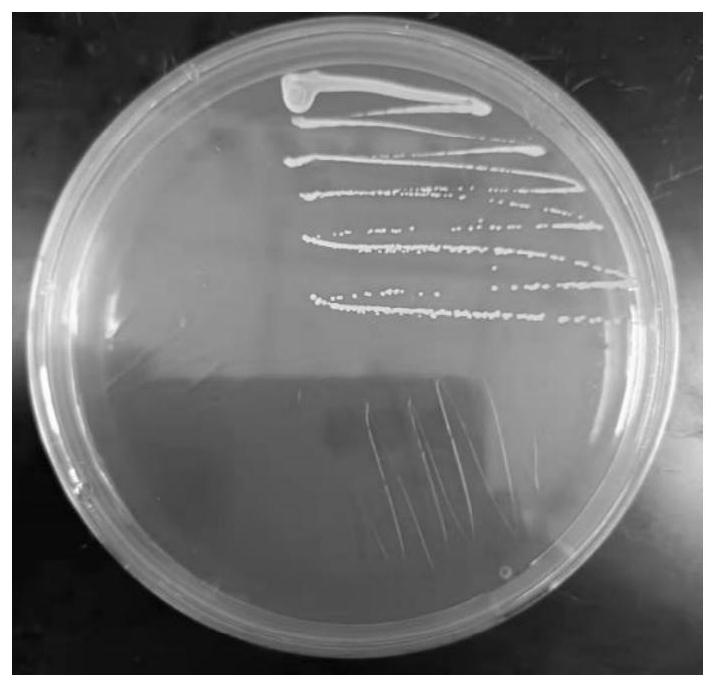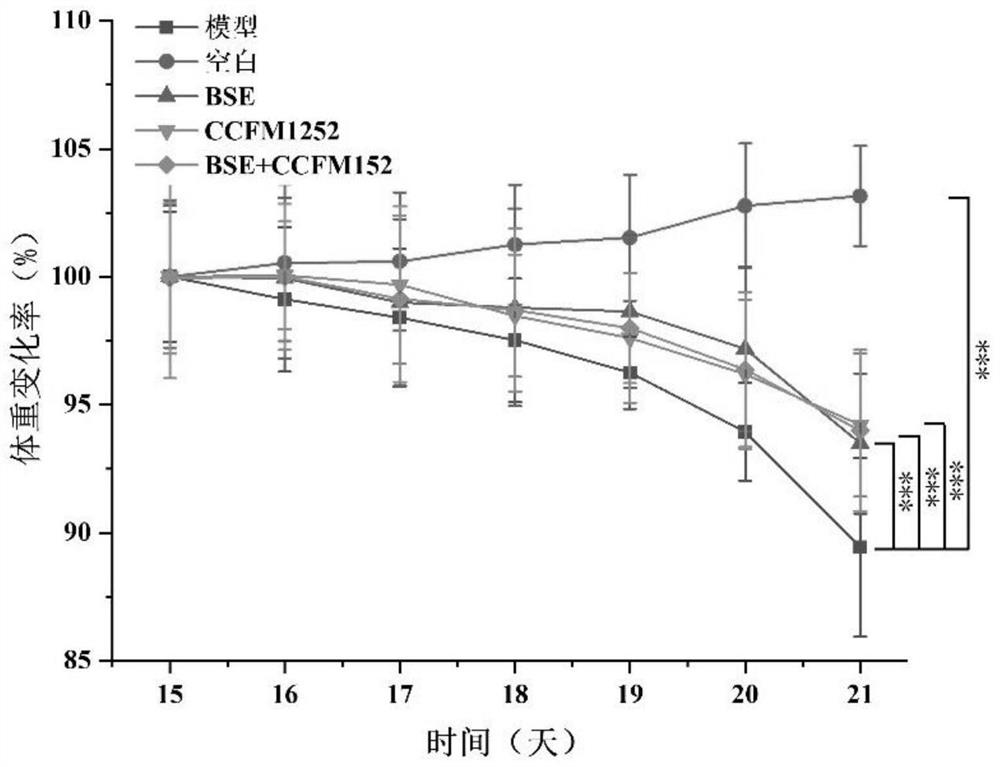Lactobacillus rhamnosus CCFM1252 capable of producing sulforaphane through metabolism to relieve inflammatory response
A technology of CCFM1252 and Lactobacillus rhamnosus, which is applied in the field of microorganisms to achieve the effects of regulating transcription levels, reducing colonic oxidative stress levels, and reducing release
- Summary
- Abstract
- Description
- Claims
- Application Information
AI Technical Summary
Problems solved by technology
Method used
Image
Examples
Embodiment 1
[0067] Example 1: Screening, identification, observation and preservation of Lactobacillus rhamnosus CCFM1252.
[0068] Take 0.5 g of fresh fecal samples from healthy adults and add them to 4.5 mL of 0.9% normal saline for gradient dilution. Select the appropriate gradient dilution and spread it in MRS solid modified medium supplemented with 0.2% bromocresol purple. Incubate under anaerobic conditions at 37°C for 24-48h. A single colony with an obvious discoloration circle was selected and inoculated onto an MRS plate for streak purification, and a single colony was picked and transferred to a liquid MRS liquid medium for enrichment, and stored in 30% glycerol to obtain the strain Lactobacillus rhamnosus CCFM1252.
[0069] The whole genome DNA of strain CCFM1252 was extracted for the amplification of 16S rDNA, and the amplified DNA fragments were collected and sequenced (completed by Suzhou Jinweizhi Biotechnology Co., Ltd.), and the sequence was compared in NCBI. The strain ...
Embodiment 2
[0071] Example 2: Growth of Lactobacillus rhamnosus CCFM1252 in glucoraphanin-containing medium
[0072] The cryopreserved rhamnosus CCFM1252 was streaked in MRS solid medium, cultured anaerobic at 37°C for 24 to 48 hours, and then passaged through MRS liquid medium for 2 to 3 times, with an inoculum of 2% to 4%. Inoculated in the modified MRS liquid medium, cultured in an anaerobic environment at 37°C, and the OD of the culture medium was measured every 2h. 600 value, and retained the supernatant for HPLC detection of glucoraphanin content. When the growth of rhamnose CCFM1252 entered a stable phase, the measurement was stopped.
[0073] The experimental results are as figure 2 shown, Lactobacillus rhamnosus CCFM1252 in the modified MRS medium containing glucoraphanin, the OD 600 The value increases continuously and enters a stable period around 10h. The content of glucoraphanin was detected by HPLC, and it was found that the content of glucoraphanin continued to decreas...
Embodiment 3
[0074] Example 3: Determination of Lactobacillus rhamnosus CCFM1252 metabolic sulforaphane activity
[0075]The cryopreserved rhamnosus CCFM1252 was streaked in MRS solid medium, cultured anaerobic at 37°C for 24 to 48 hours, reactivated 2 to 3 times, and then inoculated into MRS liquid culture with 2% to 4% of the inoculum. After culturing in the anaerobic environment at 37°C for 24 hours, take 1 mL of bacterial solution and centrifuge to collect the bacterial slurry, resuspend the bacterial slurry with 0.05 mM phosphate buffer solution (pH=7.0), and crush it with 45 Hz ultrasonic, and then centrifuge to obtain Cell disruption supernatant. In a 1.5 mL centrifuge tube, add 100 μL glucoraphanin with a concentration of 1 mM, 600 μL cell disruption supernatant, and 100 μL 1 mM ascorbic acid, wherein both glucoraphanin and ascorbic acid are dissolved in phosphate buffer. After 150 min of reaction at 37°C, the supernatant was retained for the determination of sulforaphane content ...
PUM
 Login to View More
Login to View More Abstract
Description
Claims
Application Information
 Login to View More
Login to View More - R&D
- Intellectual Property
- Life Sciences
- Materials
- Tech Scout
- Unparalleled Data Quality
- Higher Quality Content
- 60% Fewer Hallucinations
Browse by: Latest US Patents, China's latest patents, Technical Efficacy Thesaurus, Application Domain, Technology Topic, Popular Technical Reports.
© 2025 PatSnap. All rights reserved.Legal|Privacy policy|Modern Slavery Act Transparency Statement|Sitemap|About US| Contact US: help@patsnap.com



